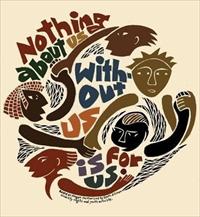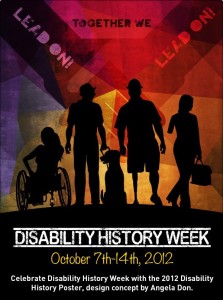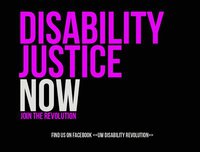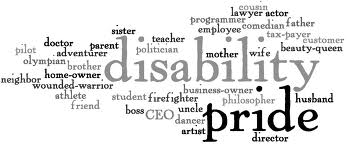On Normalcy and Identity Politics
I used to be quite enamored of identity politics. My main exposure to the concept came from Tobin Siebers’ Disability Theory — a book in which he makes the compelling argument that identity is a form of social theory (Siebers 2011, 33).
For Siebers, our identities are neither fixed nor merely personal. Instead, they provide evidence for the ways in which we navigate the social environment, and they serve to highlight all of its bigotries and injustices. In looking at social and political issues through the lens of identity politics, Siebers suggests that we avoid seeing bodies as merely individual and look at the construct of the archetypal body for whom our culture is designed — the body that can easily enter public spaces, that has the right to consensual sexual activity, that embodies human worth (Siebers 2011, 85, 124-125). Thus, racial identity, queer identity, disability identity — any minority identity — has the potential to call out inequities with respect to rights, social treatment, and inclusion. I find this outlook a very powerful one.
But I’ve come to feel frustrated by identity politics. Issuing social critique from a number of different perspectives is absolutely necessary, but I’ve found that these perspectives start to clash in ways that subvert the whole notion of solidarity. These clashes happen in a number of ways. Sometimes, when people discuss one form of oppression, they reinforce another — as when people protest racism but insist that homosexuality is a perversion. At other times, the hyperbole starts to fly, with people in different identity groups vying for who has it worse. At still other moments, people focus on one form of oppression while essentially telling other people to wait their turn.
Whenever I see these conflicts happening, I feel very stymied. I understand why they happen. I understand that people in all oppressed groups are laboring under so much invisibility and so much dismissal that it’s very difficult to cede the floor. I have watched this impulse in myself. While my overriding interest is in how different forms of oppression work to reinforce one another, I have often felt something along the lines of, “Enough about your oppression! Let’s talk about disability. It never gets any airtime.” Given how little airtime most of us get, I daresay that most people in most minority groups feel similarly.
Part of the reason for my general disillusionment with identity politics is that I’ve come to feel that the overriding category that governs all others is not race, not class, not ability, not gender, and not sexuality, but Normalcy. As Lennard Davis points out, the concept of Normalcy only entered the cultural imagination in the mid-nineteenth century as a statistical average of human qualities that became the image of a non-existent “average man” (Davis 1995, 26). From there, European and American society embraced the notion that “average” was synonymous with “normal,” and that anyone who did not fit the demands of Normalcy was deviant and dangerous (Davis 1995, 29). Disabled people became associated with others who had “abnormal” traits, such as criminals and the poor, and their bodies were said to threaten the health of the body politic (Davis 1995, 35-36).
Today, under Normalcy, anyone who is not cis-gendered, heterosexual, able-bodied, white, and middle class is “abnormal” — a word that is often code for disabled and criminal. People who are criminal are almost always seen as disabled, and disabled people are routinely portrayed at the extremes of human experience: morally pure or criminally dangerous, asexual or sexually deviant, bitter crips who are a burden to all or super crips who need nothing from anyone. Historically, many different classes of people have been thrown into the category of “abnormal,” usually with reference to disability. People of color have been marked as unintelligent, queer and trans* people as pathologically ill, and women as weak and unstable.
“Normal” is what most people strive to be, and this striving accounts for why people in different marginalized groups are so willing to throw one another under the bus — and why so much of respectability politics has to do with normalization. It’s why you see ableism, misogyny, racism, classism, fatphobia, anti-Semitism, Islamophobia, transantagonism, and homoantagonism rearing their ugly heads even among people who labor under oppression. Most people flee anything that doesn’t look “normal,” even as they know that they can never meet the strictures of Normalcy. Because it is nothing more than a statistical fiction, Normalcy is the ultimate unattainable ideal, but there are powerful internalized forces at work that keep it in place. These internalized forces fulfill the purpose of herding people into a very narrow idea of what it means to be human.
The goal of attaining Normalcy does not drive these forces for the greater good. If we want to dismantle racism, homophobia, transphobia, ableism, and every other form of systemic hatred, we must begin by dismantling the notion of Normalcy. Only then can we free ourselves from the limitations of a construct that cannot possibly reflect human experience in all of its diversity.
References
Davis, Lennard J. Enforcing Normalcy: Disability, Deafness, and the Body. London, England: Verso, 1995.
Siebers, Tobin. Disability Theory. Ann Arbor, MI: University of Michigan Press, 2011.
© 2014 by Rachel Cohen-Rottenberg








Amy
3/26/2014 | 1:10 pm Permalink
This is really insightful Rachel. Very helpful too, and something I’ve been personally struggling to put in words. Although I (or you, or the person down the street) can often be labeled or identified in certain groups – the labels/identities don’t work well for me. Each group is so varied and each person is an individual with many, many different layers, that nobody fits an any designated box well. I think celebrating diversity, rather than trying to label/identify might be the way to go. Celebrating the wonderful variety of skin tones, the variety of ethnicities and cultures, the variety religions, the variety of how we see and process the world each in our own way. The world is a pretty fascinating place when you appreciate the differences, instead of trying to force an “ideal” onto everything. I like it!
Atomic Geography
3/30/2014 | 1:56 pm Permalink
Well put – thanks.
I do have a refinement perhaps to suggest. Statistical normalcy calculated with scientific methods certainly is a fairly recent development. But a broader sense of normalcy of course is present in most groups. The Great Chain of Being for example codified a particular elaboration of normalcy that had a “natural” place for each class of thing and living being.
This drive for hierarchy is a feature of a significant part of human interaction. It can enable us to get things done, but of course at the costs you describe so well.
I wish I had an answer. I think the drive for solidarity is as strong as that for hierarchy. At least I hope it is. Maybe just reminding ourselves of this is a first step.
Trackbacks & Pingbacks
[…] “On Normalcy and Identity Politics” by Rachel Cohen-Rottenberg, at “Disability and Representation.” […]